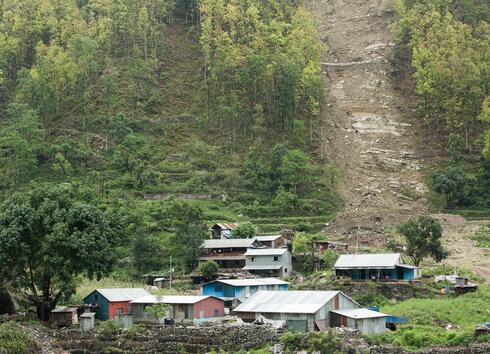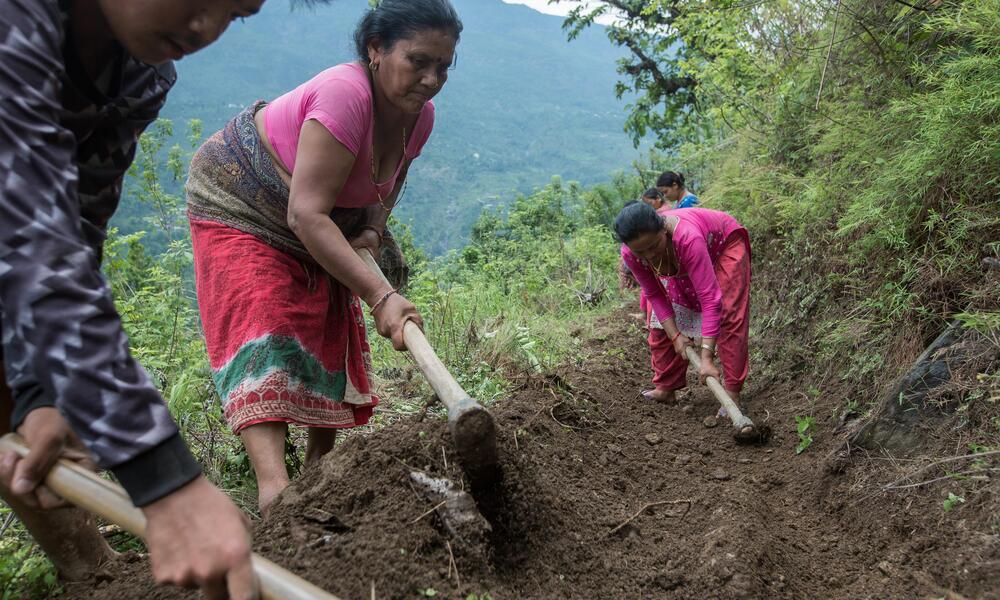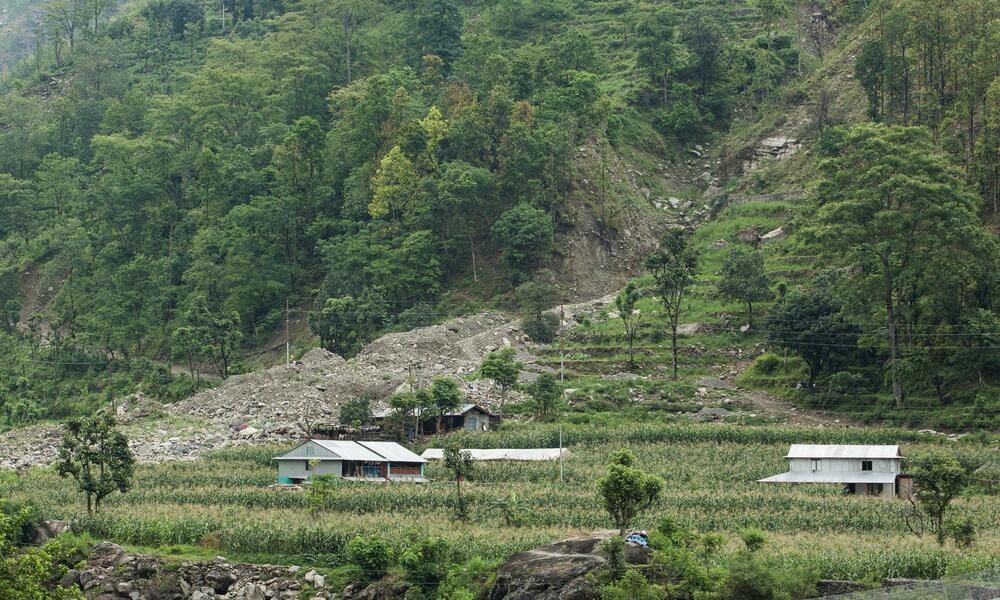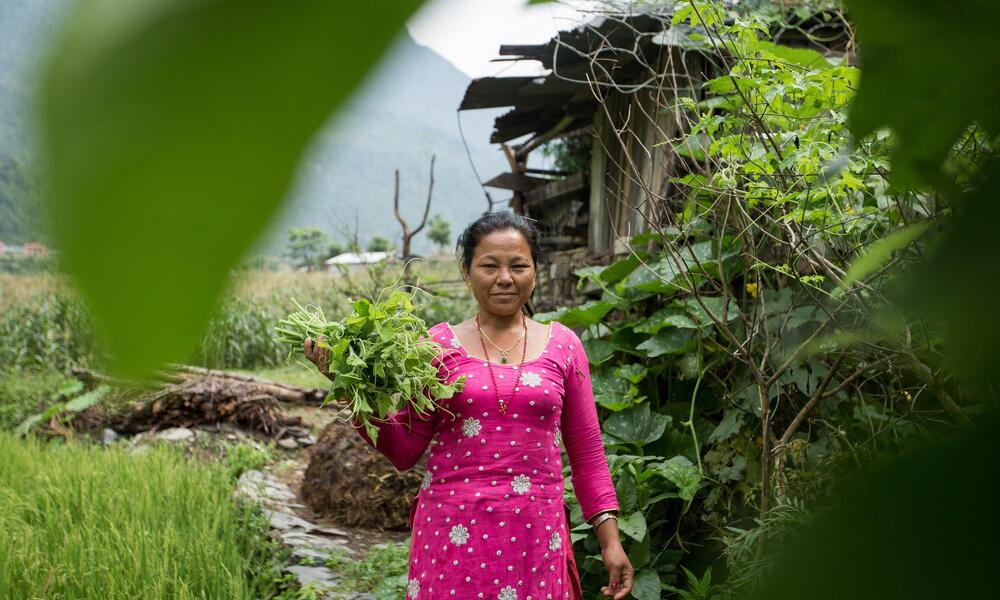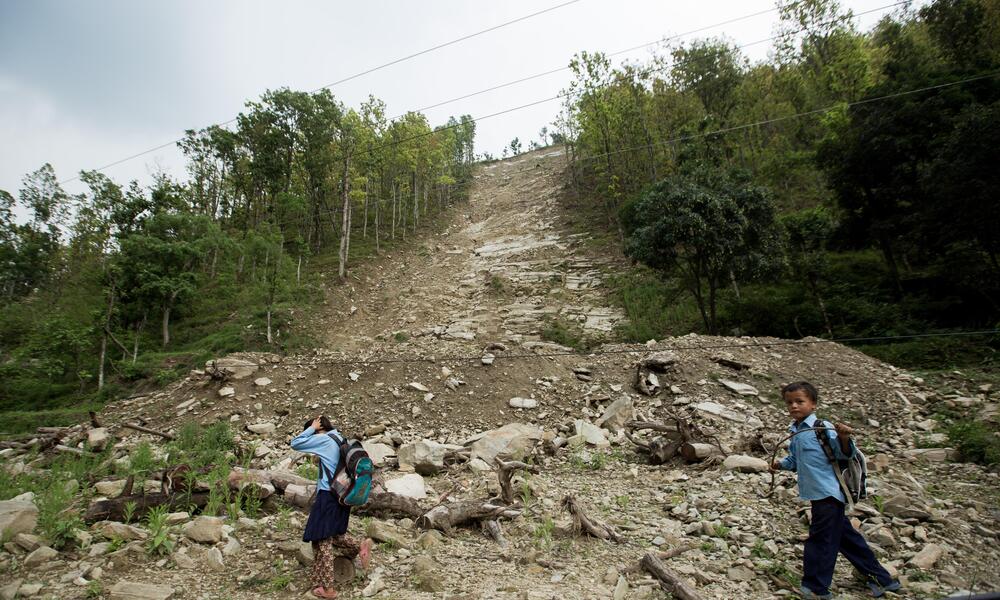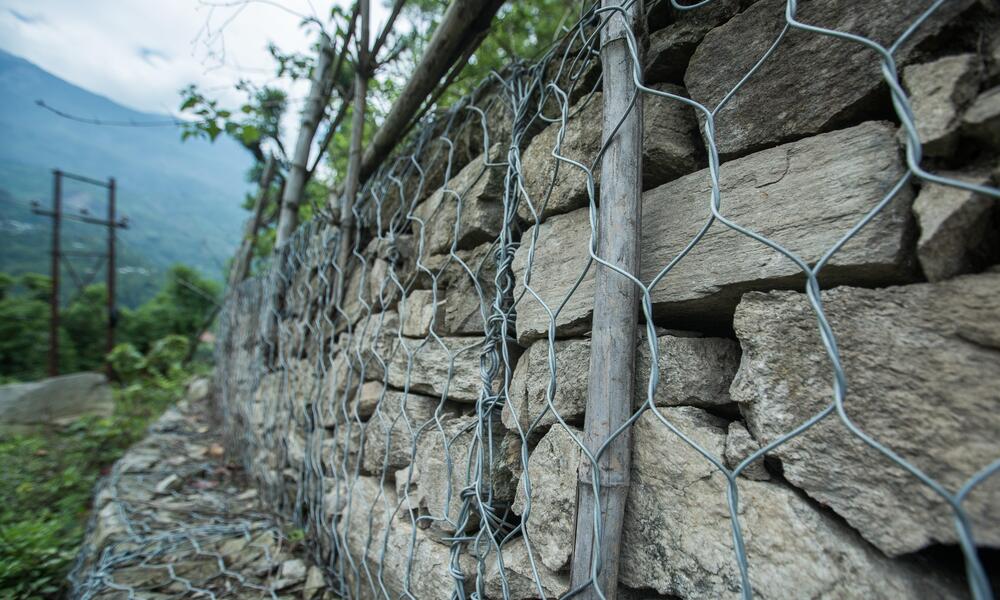Amidst chaos and loss, there was also certainty. The next morning, villagers headed towards what they thought was the culprit: a slope destabilized by the earthquake. Though the area had been re-stabilized using bioengineering techniques with support from the National Park and Buffer Zone Support Program, locals were doubtful of its effectiveness given the regularity of landslides in the region. It was at this moment that Gyanu realized the significance of disaster risk reduction measures. Not a single stone on the slope was out of place; the stabilization and disaster mitigation techniques had worked. But nature had found its way elsewhere.
With a newfound assurance that disaster risk reduction can be successful, Gyanu, supported by other women in the village, led an initiative to stabilize other landslide-prone slopes in the village. The women attended a training in bioengineering methods and the techniques that they applied included a combination of constructing minor structures built of timber and rocks, supplemented by planting trees and shrubs to stabilize the slopes.
Their efforts bore fruit when the next disaster struck and neither of the bioengineered slopes gave way. Today, Gyanu leads a project with six women to replicate these efforts elsewhere in the region. Their task is far from easy, as it takes six people three days to complete just a single step. A difficult project to take on, but one that can save the village when the next disaster strikes.
While fear still lingers and Pahirebesi continues to toil with the reality of its vulnerability, community ownership over bioengineering has paved the way for some newfound stability. As for people like Gyanu, they know that next time the mountains tremble, they will tremble a little less in response.
